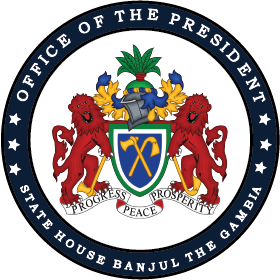OBJECTIVE
The goal of the National Public Building and Facilities Policy (NPBFP) is to enable the Government to lead, by example, in saving money, reducing environmental impact, saving energy, creating safe and healthy workspaces, and generally serving the public good through competent design, construction, maintenance, renovation and decommissioning of the country’s public buildings and facilities under its control.
CONTENT
The 6 objectives of the Policy and strategies for achieving them are summarised below:
1. Improve the policy, legal and regulatory framework by:
- I. Building the capacity of the Ministry of Transport Works and Infrastructure (MOTWI) for coordinating and promoting the NPBF Policy.
- II. Drafting, enacting and implementing an NPBF Act
- III. Updating all Acts and regulations governing the construction, maintenance and use of public buildings and facilities
- IV. Formulating new land and land use policies in collaboration with MoLRG
2. Provide a framework for government to develop and promote policies and regulations for effective stewardship of government public buildings and facilities by:
- I. Formalizing the roles of MOTWI, MOFEA and MoLRG in the provision of sustainable government public buildings and facilities
- II. Establishing performance requirements for sustainability in government public buildings and facilities
- III. Developing and implementing government-wide programs to reduce energy utilization and carbon emissions and protect and conserve water in public buildings and facilities.
3. Achieve “best value for money” in the provision and management of government public buildings and facilities by:
- I. Providing para-professional training to civil servants working on the delivery of PBFs
- II. Engaging the private sector in project formulation, design studies, construction, and commissioning of PBFs
- III. Establishing a verification system for standards of materials in the construction industry
- IV. Establishing a verification system for the quality of workmanship in the construction industry
- V. Developing a Code of Workmanship and Code of Practice for Health and Safety in Construction and Security in Occupation;
- VI. Establish a system of planned maintenance of government public buildings and facilities
4. Strengthen public buildings and facilities support structures by:
- I. Strengthening training institutions and research centers’
- II. Strengthening construction consultants’ and contractors’ associations.
5. Build the capacities of government agencies and construction consultants and contractor firms and individuals by:
- I. Providing in-office, hands-on training for construction firms in construction financing,
- II. Providing technical training specifically designed for clerks of works, site agents, facility maintenance technicians and other identified areas of need in the construction sector,
- III. Foster trade apprenticeship for skills enhancement in the construction industry
6. Monitor and evaluate the impact of the NPBFP by:
- I. Conducting baseline studies detailing the situation in 2018,
- II. Continuously measuring the growth of adoption of the NPBF policy
- III. Assessing the impact of the policy.
-
1.17 MB
Policy Document
Published: 13/12/2021
-
Ministry of Public Service
7 documents -
Office of The Vice President
3 documents -
Ministry of Agriculture, Livestock and Food Security
8 documents -
Ministry of Basic and Secondary Education
2 documents -
Ministry of Defence
3 documents -
Ministry of Environment, Climate Change and Natural Resources
9 documents -
Ministry of Finance and Economic Affairs
11 documents -
Ministry of Foreign Affairs and International Cooperation
2 documents -
Ministry of Health
30 documents -
Ministry of Higher Education, Research, Science and Technology
3 documents -
Ministry of Communications and Digital Economy
24 documents -
Ministry of Interior
3 documents -
Ministry of Justice
1 document -
Ministry of Petroleum and Energy
5 documents -
Ministry of Trade Industry and Employment
8 documents -
Ministry of Transport Works and Infrastructure
3 documents -
Ministry of Tourism and Culture
3 documents -
Ministry of Women, Children and Social Welfare
12 documents -
Ministry of Youths and Sports
2 documents -
Ministry of Land and Regional Government
1 document -
Ministry of Fisheries and Water Resources
3 documents -
Office of The President
0 documents

